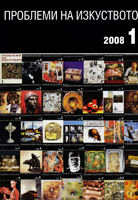Театър на промяната (1944-1948)
Theater of Change (1944–1948)
Author(s): Vasil StefanovSubject(s): Cultural history
Published by: Институт за изследване на изкуствата, Българска академия на науките
Summary/Abstract: On the eve of the political changes that gripped Bulgaria on September 9, 1944, the National Theatre found itself in a situation showing all the signs of a crisis, primarily in terms of directing. The repertoire during several subsequent seasons in the beginning of the 1940s, which was a combination of esteemed classical plays and every-day pieces, indicates the exhaustion of criteria and ideas about staging, as well as the drop in artistic creativity. The theater had begun moving without clear orientation, while the engines behind the movement itself had lost their strength. This created anticipation for change within the theatrical organism. The political upheaval of the fall of 1944 brought about change. But was it really the change that had been anticipated? After the end of the Second World War theater all across Europe was gripped by the process of change in the field of ideas, as well as in the sphere of formal expression. The change that was specifically imposed on the National Theatre was achieved through strong pressure of a political nature and was directed towards not only mastering repertoire with a new content, but also in renewing the means of expression. The new government assigned theater the task of adhering to the norms of socialist realism in its orienting activity. Efforts to fulfill this requirement dominated the following several decades and became the fundamental problem of directing at the National Theater. Due to a series of objectively occurring circumstances, theaters in the provinces turned out to be unprepared to immediately join in the emerging process of change. In the first place, it was necessary to strengthen the institution of the director, since there was relatively stable directing staff in only a few of the theaters in the larger cities. While at the National Theatre „director-style“ performances had already been established for more than a decade, in provincial theaters „actor-style“ directing still dominated. Thus, overcoming this style of directing and the type of performance connected with it became the primary task of the changes.
Journal: Проблеми на изкуството
- Issue Year: 2008
- Issue No: 1
- Page Range: 25-30
- Page Count: 6
- Content File-PDF

